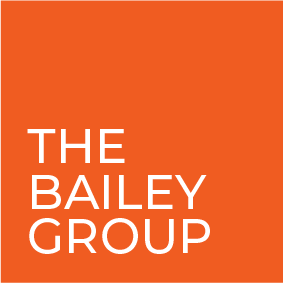
Most effective leadership styles in healthcare
Staffing shortages, burnout, high turnover rates, and financial challenges have all become endemic to the healthcare industry in recent years. Healthcare leaders must develop new skills and employ new techniques to mitigate the effects of those problems and create healthy workplace environments for employees at all levels of the organization.
Pressing challenges facing today’s healthcare executive leaders
Healthcare leaders are up against a series of significant institutional challenges that have made it more difficult to retain staff, generate revenue, attract patients, and deliver quality care. While the COVID-19 pandemic made many of these issues worse, some of them have existed for years prior to the public health crisis. For that reason, they are likely going to persist long after the pandemic subsides, and healthcare leaders need to be equipped to handle and overcome them.
Staffing shortages
Healthcare organizations are experiencing severe shortages across numerous specialties, negatively impacting their ability to drive revenue and deliver quality care to patients. The American Association of Medical Colleges (AAMC) estimates there will be a shortage of 122,000 physicians by 2023.
Even when facilities only lack professionals in one area of speciality, it can impact the ability of other specialists to deliver care. For example, a hospital might have enough physicians on staff to conduct certain surgeries, but if they are short technicians and anesthesiologists, they can’t complete those procedures.
The COVID-19 pandemic exacerbated staffing shortages. Healthcare organizations were overwhelmed by the sudden influx of COVID patients, causing bed shortages and bottlenecks in other service areas.
Moreover, many healthcare organizations had strict antivirus regulations that often caused staff to miss time due to infection, putting further pressure on already understaffed teams.
Stress and burnout
Staffing shortages and the resulting strain on existing staff to deliver the same quality care have led to serious bouts of stress and burnout among healthcare professionals. More than half of front-line www.brafton.com healthcare workers (55%) reported feeling burnt out, according to a survey from the Kaiser Family Foundation and The Washington Post.
In addition to making day-to-day workloads more challenging, unsustainable levels of workplace stress have also caused some staff members to become disenchanted with healthcare, choosing to leave the industry altogether. This has created a vicious cycle in which staffing shortages lead to more stress and higher quit rates, putting even more pressure on remaining staff and leading to ever-increasing levels of stress.
Financial challenges
The combination of staffing shortages, lower retention rates, and patient backlogs has made it difficult for healthcare organizations to undertake revenue-generating initiatives like elective procedures and outpatient services. Hospitals are projected to see revenue decreases of 53% compared to pre-pandemic levels, according to research from Kaufman Hall.
Adding another barrier to traditional means of revenue generation, business models in the healthcare space are changing. Facilities focus more now on providing value to patients, which, in a healthcare context, means ensuring people stay healthy and don’t have to go to the hospital in the first place. Some healthcare organizations have struggled to reposition themselves in the wake of this paradigm shift.
Outcomes of effective healthcare leadership
Healthcare organizations will likely grapple with the above challenges into the foreseeable future, and leaders will have to devise creative, effective ways to manage those difficulties. There are no quick fixes to any of those problems, but with effective leadership at the helm, medical facilities can still deliver meaningful benefits to patients and employees at all levels of the organization.
The benefits of good healthcare executive leadership include:
● Higher employee satisfaction: A great healthcare leader knows how to invest in the
well-being and professional development of each staff member. Employees who have
opportunities to push their careers forward while knowing they are psychologically safe when
they come to work are happier on the job, and that can lead to lower turnover rates and
reduced hiring costs.
● Better patient care delivery: Happy, healthy, and satisfied employees tend to produce better
work. In a healthcare setting, that means delivering faster, better-quality patient care. This not
only improves health outcomes for patients — and increases patient satisfaction — it can also
increase the reputation of the healthcare organization.
● Greater resiliency: Change is a fact of life in most industries, but in healthcare, change can
have serious, real-life consequences for people. Good healthcare leaders have the skills to
www.brafton.com not only overcome challenges and weather disruptions, but also to embrace change as an opportunity to expand operations and connect more deeply with patients.
Essential healthcare leadership skills
While effective leaders might possess a range of different leadership skills that drive their success, some in particular are indispensable. These are the leadership competencies at the heart of effective healthcare leadership:
Visibility and transparency
The challenges facing healthcare management are deeply rooted and can’t be solved overnight.
Unfortunately, many staff feel like they’re the ones paying the emotional price, and many of them grow frustrated and resentful at their leaders for not moving faster to find solutions.
An effective healthcare leader knows they can’t fix everything, but they can offer as much transparency as possible into solutions they are exploring. They can also provide insight into their own institutional limitations, nudging their focus away from what they can’t control and toward what they can.
Communication
As healthcare organizations continue to struggle against rampant burnout and high turnover rates, it’s more important for healthcare leaders to engage their existing staff and improve working conditions as much as possible.
Communication is key. Effective leaders know how to listen to their employees’ frustrations and consider their viewpoints, communicating plans and expectations clearly in return. When healthcare organizations maintain a free flow of communications, they engender a culture of openness and trust, which can contribute to healthier work environments and more engaged workforces.
Compassion and empathy
Sometimes health professionals don’t want answers — they just want to be heard. Strong healthcare leaders know how to stop what they’re doing and give direct reports their undivided attention. They listen intently, empathize with what direct reports are going through, and offer helpful information when they can.
This might not resolve the daily struggles health professionals face, but it does help them feel
understood and acknowledged by their leaders. This goes a long way toward easing workplace
anxieties and creating a more welcoming, psychologically safe work environment.
The different leadership styles in healthcare
There are numerous leadership styles common in the healthcare industry. Let’s take a look at some of the most common and break down the advantages and disadvantages of each one:
Democratic leadership style
The democratic leader will seek to make decisions as a community. They look for input from all
stakeholders, including other senior executives down to junior staff members. While they understand that not everyone will be happy with any given decision, they trust that a democratic decision-making process will make most people most happy most of the time.
Advantages
● Everybody gets a say in the process, meaning the final decision will reflect the most
viewpoints and perspectives.
● The democratic leader gets buy-in from all levels of the organization, giving them the
confidence to take decisive (and sometimes risky) action.
Disadvantages
● Deliberative processes can be long and tedious, and that can be a challenge when quick
decisions are needed.
● Those who don’t get their way might feel upset, unheard, and alienated, creating a dichotomy
of winners and losers.
Consultative leadership style
Similar to the democratic leadership style, consultative leaders prefer a deliberative approach to decision making, soliciting and considering the opinions of everyone in the organization. Where they differ, however, is that consultative leaders reserve the right to make a decision when the health facility fails to reach consensus. This lets them break deadlocks and keep advancing toward goals while still ensuring employees get their say.
Advantages
● Everyone is free to share their perspectives and ideas, and they feel confident leaders will
consider all viewpoints.
● Deliberation doesn’t devolve into deadlock; the leader maintains authority by exercising their
right to break ties and take decisive action.
Disadvantages
● When leaders make a final decision, they have to own that decision, even if it is unpopular.
That can be stressful for leaders who prefer to defer to the wider body.
● Those on the losing side of a decision might feel frustrated with the leader. That can make it
harder for the consultative leader to get consensus and take future action.
Authoritarian leadership style
Although authoritarian leaders (also called autocratic leaders) are not as common as they used to be, some healthcare leaders still prefer to exert commanding influence over all areas of operation. While they might seek input from a small circle of stakeholders on some issues, they largely control the key decisions.
Advantages
● Healthcare organizations with an authoritarian leadership style have a much faster, more
efficient decision-making process. There is minimal deliberation and even less dissent.
● Autocratic leaders receive less input from others, meaning fewer accommodations and
adjustments to their intended actions.
Disadvantages
● People don’t feel like leaders listen to them or care about their opinions, which can make
them feel marginalized and unimportant to the overall functioning of the organization.
● An authoritarian leadership style might contribute to the formation of an unwelcoming
workplace culture, hurting hiring and retention efforts.
Laissez faire leadership style
Especially common in the healthcare industry, laissez-faire leaders surround themselves with deputies who have their full trust and confidence. Laissez faire leadership types prefer to take a backseat to most major decisions, giving their trained and qualified department leaders outsized authority over the management of their own affairs.
Advantages
● When healthcare leaders have requisite qualifications and experience, they can generally be
trusted to manage their departments responsibly.
● Senior leaders can leave the day-to-day management of individual departments to trusted
deputies while they focus on larger, strategic initiatives.
Disadvantages
● There is a lack of cohesive community, which can be a problem when leaders need to
mobilize the wider organization to make big decisions that impact everyone.
● Leaders might lack the skills needed to influence and move organizations at scale, which
could cause the organization to fracture when tensions arise.
The Bailey Group’s approach to healthcare leadership development
The Bailey Group is committed to helping healthcare leaders build the competencies needed to face their most pressing organizational challenges. Each of our leadership coaching engagements is built on a foundation of understanding. We have a deep understanding of the environment in which healthcare leaders work, and we know there are no easy answers to the problems they face.
Our aim is not to provide ready-made solutions to those challenges. Instead, we work with healthcare leaders to develop the leadership skills and qualities needed to stay balanced in those tough situations and maintain a sense of calm even when their surrounding environments are chaotic. We empower leaders to be more present for their direct reports, helping them create a more stable work environment that is warm and welcoming for all employees.
Central to this approach is teaching healthcare leaders how to distinguish between what they can and cannot control. Many of the industry’s challenges are institutional and deeply entrenched, and individual leaders have little power to change them — even those at the top of their leadership hierarchies. They can, however, learn to accept that they can’t control everything and set healthy boundaries to ensure the stresses of the job don’t creep into other areas of their lives.
We don’t stop at the individual. We work with the entire leadership team to help build their collective capacity to respond to challenges and lead their organizations, encouraging the formation of a united front that is better able to work collaboratively and support staff.
Ready to unlock the potential of your healthcare leadership team? Reach out to schedule a free
consultation.




